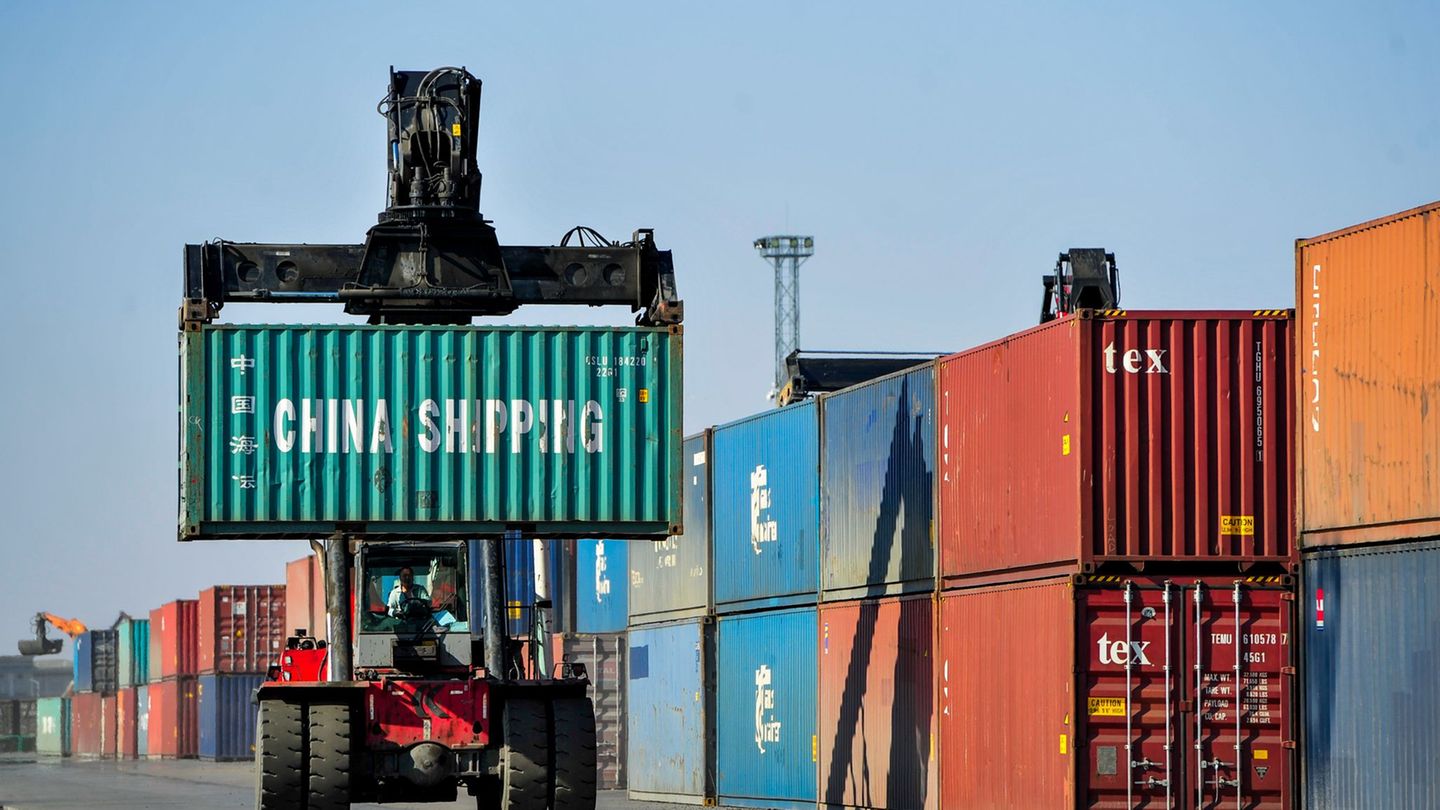World trade
China’s exports rise despite the trade conflict with the United States
Copy the current link
Add to the memorial list
The customs dispute with the USA is not over for China. Despite the pressure in world trade, the People’s Republic exports more. How does China do that?
Despite global trade conflicts, China’s foreign trade increases. As the customs authority announced in Beijing, exports in June increased in US dollars by 5.8 percent compared to the same month last year. The commercial surplus reached around $ 114.77 billion (around 98 billion euros). In the first half of the year, exports grew by 5.9 percent compared to the same period last year.
Analysts had expected an export increase of around 5 percent for June. The reason for the assumption was also that the exporters of the second largest economy in the world delivered their goods prematurely from possible other US tariffs. After a few months in the minus, imports rose slightly by 1.1 percent. From January to June, however, a decline in imports is 3.9 percent compared to the same period last year.
So the trade with the USA was
In a dispute with the United States, trade collapsed in June as in the previous months – by 16.1 percent in exports and 15.5 percent in imports. In mid -May, both sides had agreed on a break in the customs dispute. This break would run out on August 12th. It is unclear how things will go afterwards. US trade minister Howard Lutnick spoke about a meeting in early August last week.
China has not yet confirmed the meeting. Customs Vice Director Wang Lingjun emphasized in Beijing, both sides worked on the implementation of their recently agreed agreements. In addition to the tariffs, the export controls of China have previously burdened China’s export controls on rare earths, all states are affected.
Where China’s goods flow instead
So how does Beijing achieve its exporting exports despite the disputes? The Southeast Asian countries are increasingly important for China. According to the customs data, exports to Vietnam rose by 19.6 percent, according to Thailand, 22 percent and 15.3 percent after Thailand. Exports also increased significantly after Africa.
In the trade conflict with the United States, exporters from the People’s Republic were sometimes steering over Southeast Asia in order to be able to re-declare them declared better customs conditions to the USA. This is also why US President Donald Trump recently imposed tariffs from 20 percent and 40 percent against Vietnam to Vietnam recently reloaded from third countries with a destination USA. According to experts, he primarily wanted to meet China.
The trade in Germany
In view of the slightly increased overall imports of China in June, the German Chamber of Commerce (AHK) sees a sign of more demand. This is a “cautious positive news” for German companies in the People’s Republic, said Maximilian Butek, managing board member of the AHK Ostchina. “But it is too early to speak of an actual recovery, because the continuing global trade conflict continues to throw its shadows on the economic development of China,” he said.
China’s exports rose significantly slower in direct trade with Germany in June. After exporting to the Federal Republic in the double -digit range in May and April, they were only 3.5 percent compared to June 2024 in June.
Handel important topic at summit
China’s weak import numbers are also troubled by the EU. China exported 7.6 percent more to Europe in June, but imports stagnated almost with a slight increase of 0.4 percent. In the first half of the year, imports even fell by 5.9 percent.
Trade is likely to be an important topic if EU representatives in Beijing meet the Chinese side in Beijing at the end of July. “Because of the recent increased tensions between China and the EU, expectations at the summit are low,” said Butek. You hardly count on topics such as trading barriers or export controls.
Alicia García-Herrero, chief economist from the investment bank Natixis in Hong Kong, has long observed a declining share of the EU in China. “Whoever produces what China produces these days, like the industry, is bad,” she says. It is also part of the problem that China’s service sector is still inaccessible or unprofitable.
What the government does in Beijing
The aggressive price competition with too much produced goods in some sectors such as the electric car industry has been working for a long time. The weak domestic demand and a falling producer prices have also put a strain on the economy. What China gave long cheap goods for export now seems to cause displeasure during the leadership in Beijing. The Ministry of Industry and IT announced that it is more against unhealthy competition in the auto industry.
In addition, Beijing wants to put more money in his exchange program Age against new devices or cars to boost the buying mood. In some provinces, the money pots already dried up what state media regarded as a success. On the other hand, some experts argue that the program is costly and not very sustainable.
dpa
Source: Stern




